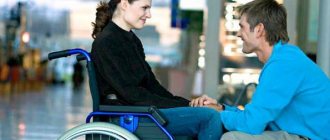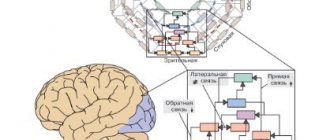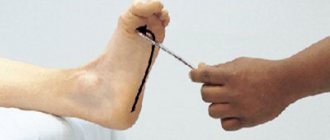“It all started 9 years ago. I was rock climbing. One day, during another trip to the mountains, my arms and legs suddenly began to cramp while climbing. This happened several times. The first thought was that there was something serious with me, but I immediately laughed at myself in my heart. I decided that such thoughts are paranoia, I’m only 40 years old!”
- What is motor neuron disease
- Different types of motor neuron disease
- Who can get sick
Amyotrophic lateral sclerosis (ALS) is the most common type of motor neuron disease (MND). The disease is also known internationally as Lou Gehrig's disease, motor neurone disease, motor neuron disease or Charcot's disease.
It was the Frenchman Jean-Martin Charcot who first described ALS in 1869, but the disease became widely known after the diagnosis was made to the outstanding American baseball player Lou Gehrig in 1939. At one time, composer Dmitry Shostakovich, singer and composer Vladimir Migulya, and Chinese dictator Mao Zedong also suffered from ALS. The most famous person with ALS was the English physicist Stephen Hawking, who lived with the disease for 50 years and is considered the record holder for the longest life expectancy with ALS.
Video with Russian subtitles.
Affected areas
As motor neuron disease gradually progresses, patients experience increasing problems with breathing, swallowing, moving, and communicating with others. The following difficulties may occur:
- Hands, arms . Even when performing daily tasks (washing dishes, turning a tap, pressing keys), increasing difficulty will appear with increasing weakness in the hands and arms.
- Legs . Due to weakening of the legs, it will become increasingly difficult for the patient to move.
- Emotional condition . Sometimes areas that are responsible for emotional reactions can be affected, which is manifested by involuntary laughter or crying of a physiological nature.
- Shoulders, neck . After a certain time, it becomes difficult for the patient to breathe due to weakening neck muscles.
- Breathing . The disease mainly spreads to the respiratory muscles, making breathing difficult.
- Swallowing, speech functions . There may be difficulty eating, drinking and talking.
In some patients, MND causes memory impairment, decreased concentration, difficulty choosing words and learning difficulties. That is, an imperceptible and hidden change in mental functions occurs.
In MND, the intellect remains intact and patients are aware of everything that is happening. For many people, vision, taste, touch and hearing are not affected; the functions of the bladder, intestines, genitals (up to the later stages) and the heart muscle remain functional.
Pathogenesis and pathomorphology of the disease
Motor neuron disease is considered a multifactorial pathology, the development of which occurs from the influence of genetic inheritance with environmental factors.
In 10% of situations, the disease is associated with familial forms, where 25% are characterized by a mutation of the SOD-1 gene. Sometimes sporadic types of pathology are associated with changes in other genes (neurofilaments) as a result of dysfunction or structure, under the influence of which motor neurons begin to degenerate. The mechanism is triggered by the action of provocateurs (age, gender, heavy metals, etc.). The relationship between the occurrence of the disease and infectious agents is unlikely.
Clinically, neurons degenerate when 80% of cellular structures are destroyed, which makes timely therapy of the pathology difficult and requires diagnostic studies during the preclinical stage.
Near the frontal lobes, in the 3rd, 5th layers of the central gyri, the motor nuclei of the 5th, 7th, 9th and 11th cranial nerves in the brain stem, neuronal degeneration and changes in the corticospinal tracts are determined. At various stages of changes in motor neurons, eosinophilic, basophilic inclusions and Bunin bodies are determined.
Axonal spheroids are formed in the proximal sections of axons. Based on the data obtained, disturbances in the movement and degradation of proteins are noted. In muscle structures, denervation atrophy is determined.
What causes the death of motor neurons?
According to experts, the main causes of MND are heredity and environmental factors that increase the risk of pathology.
A familial hereditary form has been identified in approximately 5-10% of patients with motor neuron disease. MND was mainly diagnosed (90-95% of cases) in a sporadic form that occurs for unknown reasons.
Epidemiological studies have revealed a possible connection between the effects of shock, mechanical injuries, high sports loads, and harmful substances on the development of the disease.
Currently, studies are being carried out on the mechanisms of damage to intracellular processes, due to which motor neurons and surrounding cells die.
Possible reasons include a strike and malfunction of “editors” in processing RNA, changes in chemical communication connections of the spinal cord, disruption of the transport of metabolic products, nutrients, accumulation of protein aggregates in neurons with disruption of normal functions and adhesion, the appearance of free oxygen radicals, disruption of the energy background cells and lack of nutrients for motor neurons. Also, the death of motor neurons can occur due to being surrounded by glial cells, which can be toxic.
Etiology
The exact etiology of ALS is unknown. In approximately 5% of cases, familial (hereditary) forms of the disease occur. 20% of familial cases of ALS are associated with mutations in the superoxide dismutase-1 gene, located on chromosome 21[4][5]. This defect is believed to be inherited in an autosomal dominant manner.
Increased activity of the glutamatergic system plays a key role in the pathogenesis of the disease, while excess glutamic acid causes overexcitation and death of neurons (so-called excitotoxicity). The remaining motor neurons may spontaneously depolarize, which is clinically detected by fasciculations.
Scientists from Johns Hopkins University in Baltimore have identified the molecular genetic mechanism underlying the occurrence of this disease. It is associated with the appearance in cells of a large amount of four-stranded DNA and RNA in the C9orf72 gene, which leads to disruption of the transcription process, and, consequently, protein synthesis. However, the question of how exactly these changes lead to the degradation of motor neurons remains open[6].
Also important in pathophysiology is TDP-43, which has been identified as a major component of ubiquitinated cytoplasmic protein aggregates in all patients with sporadic ALS, but located outside the nucleus (in normal neurons it is in the nucleus). Although it remains an open question whether these aggregates cause neurodegeneration in ALS, mutations in TARDBP have been found in only 3% of cases of hereditary sclerosis and in 1.5% of patients with sporadic ALS, suggesting that the aggregates TDP-43 plays a key role in the initiation of ALS. In addition to mutations in the TARDBP gene, zinc ions can also cause TDP-43 aggregation[7][8].
The discovery of mutations in the FUS (Fusion in Sarcoma) gene on chromosome 16, which are associated with hereditary forms of ALS, supports this theory. FUS aggregates were not clearly identified in patients with pathological alterations in TDP-43 or SOD1, suggesting a novel disease pathway.
There are publications on websites on the Internet that link the occurrence of ALS to chronic Lyme disease (chronic borreliosis). Such information is most often distributed by sites maintained by sellers of specific drugs or clinics specializing in such treatment. Clinical studies have reliably shown the absence of an etiological connection between borreliosis and ALS[9][10].
Main and rare types of MND
Motor neuron disease has several main forms:
- ALS (amyotrophic lateral sclerosis) develops in 80% of people with motor neuron disease, causing mainly weakness, cramps and wasting in the muscles, stiffness of the upper and lower extremities;
- PBP (progressive bulbar palsy) affects about 10-25% of people, spreads to the neurons of the spinal cord and brain, and is manifested by difficulties in chewing, swallowing, and slurred speech;
- muscular progressive atrophy (8%) - a rare type of MND, affects motor neurons in the lower extremities, developing weakness, muscle atrophy, fasciculations and weight loss;
- PLS (lateral primary sclerosis) (2%) primarily affects motor neurons in the upper extremities, developing muscle spasticity, unsteady walking, and difficulty speaking.
Risk factors
ALS accounts for approximately 3% of all organic lesions of the nervous system. The disease usually develops between the ages of 30 and 50[11][12].
The total lifetime risk of developing ALS is 1:400 for women and 1:350 for men.
5-10% of patients are carriers of a hereditary form of ALS; A special, endemic form of the disease has been identified on the Pacific island of Guam. The vast majority of cases (90-95%) are not associated with heredity and cannot be positively explained by any external factors (previous diseases, injuries, environmental situation, etc.)[13].
Several scientific studies[14][15][16][17] have found statistical correlations between ALS and certain agricultural pesticides.
Symptoms and clinical picture of MND depending on the form
A whole group of diseases affect motor neurons. Neurons include two groups of cells necessary for voluntary movements.
The first group includes motor neurons located in the precentral gyrus, and the second group includes neurons located in the spinal cord and brain stem.
Depending on the location of the dead motor neuron, the form of the disease and its symptoms will depend.
With spastic paraplegia, the motor neuron of the first group is affected, with spinal muscular atrophy, infantile paralysis - the second group, and with amyotrophic lateral sclerosis, both groups of neurons.
Forms of MND and their manifestations:
- Spastic paraplegia is defined by increased spastic tone of the legs with gait disturbance. It is caused by genetic mutations.
- Spinal muscular atrophy by weakness and reduction of muscles, lack of activation or innervation by nerve fibers. Depending on the time of onset of the first symptoms and the nature of the distribution of muscle weakness, spinal muscular atrophy is classified.
- A more common pathology of the musculoskeletal system is ALS , the incidence of which increases with age. As a result, the necrosis of nerve cells progresses, weakness and muscle atrophy increase.
- Cerebral palsy , polio is a viral disease of lower neurons.
Notes
- Disease ontology database (English) - 2021.
- Monarch Disease Ontology release 2018-06-29sonu - 2018-06-29 - 2018.
- Epidemiology of Sporadic ALS. (English) (inaccessible link). Stanford Medicine » School of Medicine. Retrieved October 24, 2015. Archived October 8, 2015.
- Conwit, Robin A.
Preventing familial ALS: A clinical trial may be feasible but is an efficacy trial warranted? (English) // Journal of the Neurological Sciences (English) Russian. : journal. - 2006. - December (vol. 251, no. 1-2). - P. 1-2. — ISSN 0022-510X. - doi:10.1016/j.jns.2006.07.009. - PMID 17070848. - Al-Chalabi, Ammar;
P. Nigel Leigh. Recent advances in amyotrophic lateral sclerosis (English) // Current Opinion in Neurology (English) Russian. - Lippincott Williams & Wilkins (English) Russian., 2000. - August (vol. 13, no. 4). - P. 397-405. — ISSN 1473-6551. - doi:10.1097/00019052-200008000-00006. - PMID 10970056. - “Hawking’s disease” was explained by the appearance of four-stranded DNA // Lenta.ru, 2014-03-07
- Cyrille Garnier, François Devred, Deborah Byrne, Rémy Puppo, Andrei Yu.
Roman. Zinc binding to RNA recognition motif of TDP-43 induces the formation of amyloid-like aggregates (En) // Scientific Reports. — 2017-07-28. — T. 7, issue. 1. - ISSN 2045-2322. - doi:10.1038/s41598-017-07215-7. - Aphrodite Caragounis, Katherine Ann Price, Cynthia PW Soon, Gulay Filiz, Colin L. Masters.
Zinc induces depletion and aggregation of endogenous TDP-43 // Free Radical Biology and Medicine. - T. 48, issue. 9. - pp. 1152-1161. - doi:10.1016/j.freeradbiomed.2010.01.035. - ALSUntangled: research into Lyme disease and the drug Iplex = ALSUntangled Update 1: Investigating a bug (Lyme Disease) and a drug (Iplex) on behalf of people with ALS: [trans. from English] // ALS INFO. — 2021. — April 25.
- ALSUntangled Update 1: Investigating a bug (Lyme Disease) and a drug (Iplex) on behalf of people with ALS : [English] : Report / The ALSUntangled Group // Amyotrophic Lateral Sclerosis : journal. - 2010. - Vol. 10, no. 4. - P. 248–250. - doi:10.1080/17482960903208599. - PMID 19701824.
- Khondkarian O. A., Amyotrophic lateral sclerosis, in the book: Multi-volume guide to neurology, ed. S. N. Davidenkova, vol. 3, book. 1, M., 1962
- Amyotrophic lateral sclerosis
- article from the Great Soviet Encyclopedia. - https://www.ninds.nih.gov/disorders/amyotrophiclateralsclerosis/detail_ALS.htm Archived January 4, 2015 on the Wayback Machine “In 90 to 95 percent of all ALS cases, the disease occurs apparently at random with no clearly associated risk factors. … About 5 to 10 percent of all ALS cases are inherited. The familial form of ALS usually results from a pattern of inheritance that requires only one parent to carry the gene responsible for the disease. Mutations in more than a dozen genes have been found to cause familial ALS.”
- Exposure to pesticides and risk of amyotrophic lateral sclerosis: a population-based case-control study.By Bonvicini F, Marcello N, Mandrioli J, Pietrini V, Vinceti M. In Ann Ist Super Sanita. 2010; 46(3):284-7.PMID 20847462
- Pesticide exposure as a risk factor for amyotrophic lateral sclerosis: A meta-analysis of epidemiological studies: Pesticide exposure as a risk factor for ALS. By Malek AM, Barchowsky A, Bowser R, Youk A, Talbott EO. In Environ Res. 2012 Aug; 117:112-9. PMID 22819005
- Are environmental exposures to selenium, heavy metals, and pesticides risk factors for amyotrophic lateral sclerosis?. By Vinceti M, Bottecchi I, Fan A, Finkelstein Y, Mandrioli J. In Rev Environ Health. 2012; 27(1):19-41. PMID 22755265
- Pesticide exposure and amyotrophic lateral sclerosis. By Kamel F, Umbach DM, Bedlack RS, Richards M, Watson M, Alavanja MC, Blair A, Hoppin JA, Schmidt S, Sandler DP. In Neurotoxicology. 2012 Jun; 33(3):457-62. PMID 22521219
- Reflexogenic zones
- article from the Great Soviet Encyclopedia. - Brooks BR, Miller RG, Swash M., Munsat TL
El Escorial revisited: revised criteria for the diagnosis of amyotrophic lateral sclerosis (English) // Amyotroph. Lateral Scler. Other Motor Neuron Disord. : journal. — 2000. — December (vol. 1, no. 5). - P. 293-299. - PMID 11464847. - ↑ 12
https://www.ninds.nih.gov/disorders/amyotrophiclateralsclerosis/detail_ALS.htm Archived copy from January 4, 2015 on the Wayback Machine How is ALS treated? - Aaron Hitler, Leonard Petrucelli.
Solving the mystery of ALS // In the world of science. — 2021. — No. 8/9. — P. 50-56. - Neurology. National leadership. - GEOTAR-Media, 2010. - 2116 p. — 2000 copies. — ISBN 978-5-9704-0665-6.
- Riluzole // PATIENT & CAREGIVER EDUCATION (Russian)
- https://www.ninds.nih.gov/disorders/amyotrophiclateralsclerosis/detail_ALS.htm Archived January 4, 2015 on the Wayback Machine However, the Food and Drug Administration (FDA) approved the first drug treatment for the disease—riluzole (Rilutek )—in 1995. Riluzole is believed to reduce damage to motor neurons by decreasing the release of glutamate. Clinical trials with ALS patients showed that riluzole prolongs survival by several months
- Nagata, Kazuaki
.
Japan recognizes Cyberdyne's robotic suit as medical device, widespread use anticipated (English), The Japan Times Online
(26 November 2015). Retrieved February 10, 2021. - "Radicava": a long-awaited drug against amyotrophic lateral sclerosis | MOSMEDREPARATIONS
- https://www.ab-science.com/file_bdd/content/1490200983_SLAPresentationv03.2017vdef.pdf
- The Bishop of ROSHVE asks the head of the Ministry of Health of the Russian Federation to change the situation with the attitude towards patients with an “unrecognized” illness, NewsRu, August 21, 2013
- Where can you get the right to hope? // “Honest Word” No. 3 (832), 01/23/2013
Differential diagnosis
The diagnosis of MND is confirmed by electroneuromyography, which reveals a generalized denervation process. To identify spontaneity, duration of motor units, fasciculations, fibrillations, a three-level needle EMG is performed.
Stimulation electroneuromyography makes it possible to detect slowing of motor fibers and pyramidal insufficiency.
Transcranial magnetic stimulation reveals a decrease in excitability in central motor neurons. MRI makes it possible to exclude other pathologies with a similar clinical picture (hernia compression or tumor).
Treatment options
Motor neuron disease is incurable, and the goal of therapy is to slow down the development of the process and reduce the severity of symptoms, since there are no methods for a complete cure. The effectiveness of Rilutek, a presynaptic inhibitor, has been proven.
As with ALS, antioxidant agents may be used. Experts also prescribe creatine, carnitine, and vitamins. Another drug is Riluzole, but the drug is not officially available to patients in the Russian Federation. Like Rilutek, the drug reduces the amount of glutamate released during the transmission of nerve impulses.
Polytherapy includes the elimination of pain from muscle spasms, for which Carbamazepine is prescribed at a dose of about 100-200 mg several times a day. With increased muscle tone, you need to take muscle relaxants (Sirdalud, Baclofen).
Respiratory support is a major factor influencing quality of life and prognosis. With the progression of the pathology, weakening and atrophy of the muscles of the diaphragm and other muscle groups is observed; non-invasive ventilation of the lungs is required.
This normalizes sleep, reduces fatigue and shortness of breath. A device with a special mask is used.
If swallowing functions are impaired, then feeding is carried out with a nasogastric tube or gastrostomy tube. Special nutrition is prescribed to make up for the lack of calories.
It is difficult to talk about the prognosis for MND. In rare cases, people live for decades. The person may die within a few months. But on average, life expectancy is 2-5 years from the onset of detection of the disease. There are no specific preventive measures.
Treatment
Patients with ALS require supportive care to relieve symptoms[20].
Gradually, patients begin to weaken their respiratory muscles, develop respiratory failure and need to use equipment to assist breathing during sleep (IPPV or BIPAP). Then, after complete failure of the respiratory muscles, round-the-clock use of a ventilator is required[20].
Research is underway on a treatment method that uses blocking the genes that cause this disease[21].
Slow progression
Riluzole (Rilutek) is the only drug that significantly slows the progression of ALS[22][23]. Available since 1995. It inhibits the release of glutamate, thereby reducing damage to motor neurons. It prolongs the life of patients by an average of a month and slightly delays the moment when the patient will need artificial ventilation[24].
HAL therapy, a new robotic treatment method, has been officially approved for use in ALS rehabilitation in Europe and Japan[25].
In 2021, a new drug, Radicava (Edaravone), was approved for the treatment of ALS for the first time in 22 years[26].
Clinical studies are also being conducted on the use of the drug Masitinib[27].
In Russia
In Moscow there are:
- Charitable foundation to help people with ALS and other neuromuscular diseases “Live Now”
- Charitable foundation for helping patients with ALS G. N. Levitsky. https://www.alsportal.ru
- assistance service for patients with ALS at the ANO "Hospital of St. Alexis".
At the same time, in Russia, many ALS patients do not receive adequate medical care[28]. For example, until 2011, ALS was not even included in the list of rare diseases, and the only drug that slows the progression of the disease, Riluzole, was not registered[29].
ALS - motor neurons die completely
During ALS, evenly expressed symptoms of central and peripheral paralysis are combined, the predominance of some symptoms over others (segmental-nuclear or pyramidal variants). In the later stages of the disease, indicators of peripheral paralysis predominate.
During ALS, damage to motor neurons in the anterior horn of the spinal cord begins. As the pathology progresses, bulbar disorders appear mainly in men.
There are thoracic, cervical, diffuse and lumbar onsets. The classic variant is the cervical one, the first symptoms of which are characterized by weakness and atrophy of the hand, impaired small movements, and the presence of fascicular twitching of the affected muscles.
Stephen Hawking is the most famous ALS patient
Subsequently, weakness and atrophy of the muscles of the shoulder girdle appear; patients find it difficult to dress and raise their arms above the horizontal plane. First, one side of the body is affected, then symptoms appear on the other arm with the development of upper mixed paraparesis.
Weakness and stiffness of the lower extremities develop; patients find it difficult to walk long distances or navigate stairs.
The extensor muscles are damaged with the manifestation of mixed lower paraparesis. In the later stages, pseudobulbar and bulbar syndromes and the appearance of dysphagia appear.
The first symptoms of chest onset will be fasciculations, muscle atrophy in the abdomen, back and weakness. It becomes difficult for patients to stand and bend over. At the next stages, mixed unilateral hemiparesis appears with the involvement of the muscles of the opposite part of the body. At the initial stage, abdominal reflexes disappear. As a result of respiratory disorders, death occurs.
Diffuse onset is manifested by signs of peripheral motor neuron dysfunction with pronounced fatigue and respiratory disorders. Body weight decreases until dysphagia appears, and death occurs as a result of respiratory failure.
Usually, damage to the masticatory and facial muscles occurs later; it is difficult for the patient to stick out his tongue, pull his lips into a tube, or puff out his cheeks.
Complications of ALS include paralysis, paresis of the neck muscles and limbs, impaired swallowing, respiratory failure, contractures of the limbs, aspiration pneumonia, urosepsis, depression, painful muscle spasms, and cachexia. With the progression of motor disorders, the patient dies.









